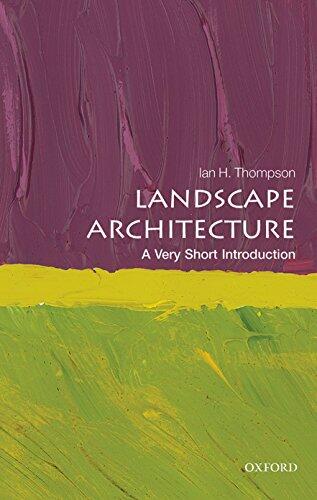
Landscape Architecture: A Very Short Introduction
par
Ian H. Thompson
Pas encore d'évaluations
Romance
Science & Technology
History
+2
more
Format
Broché
Pages
152
Langue
Anglais
Publié
Jul 1, 2014
Éditeur
Oxford University Press
Édition
Illustrated
ISBN-10
0199681201
ISBN-13
9780199681204
Description
Ian Thompson delves into the intricacies of landscape architecture, highlighting its profound impact on our daily environments. The discipline does more than just beautify spaces; it influences how people engage with their surroundings and contributes to sustainability. Thompson navigates the historical context and contemporary practices, illustrating how landscape architecture intertwines with urban design, ecology, and community well-being.
Throughout the exploration, readers uncover the theoretical frameworks that guide practitioners, enabling them to create functional yet aesthetically pleasing spaces. It meticulously examines the balance between nature and human activity, demonstrating how thoughtful design can enhance urban landscapes while promoting ecological health. The book serves as an accessible entry point for those new to the field and a refreshing overview for seasoned professionals.
With insightful commentary and clear examples, Thompson invites readers to appreciate the nuances of this essential discipline. Ultimately, the work emphasizes that landscape architecture is a vital element in crafting livable, engaging environments for future generations.
Throughout the exploration, readers uncover the theoretical frameworks that guide practitioners, enabling them to create functional yet aesthetically pleasing spaces. It meticulously examines the balance between nature and human activity, demonstrating how thoughtful design can enhance urban landscapes while promoting ecological health. The book serves as an accessible entry point for those new to the field and a refreshing overview for seasoned professionals.
With insightful commentary and clear examples, Thompson invites readers to appreciate the nuances of this essential discipline. Ultimately, the work emphasizes that landscape architecture is a vital element in crafting livable, engaging environments for future generations.
Avis
Aucun avis pour le moment
Soyez le premier à donner votre avis sur ce livre et partagez vos pensées
Ajouter le premier avisJournal de lecture
Aucun journal de lecture trouvé
Commencez à suivre vos progrès de lecture pour voir les journaux ici
Ajoutez votre premier journal de lectureNotes
Journal des transactions
Aucun journal de transactions trouvé
Commencez à suivre vos transactions de livres pour voir les journaux ici
Ajoutez votre premier journal de transactions


















